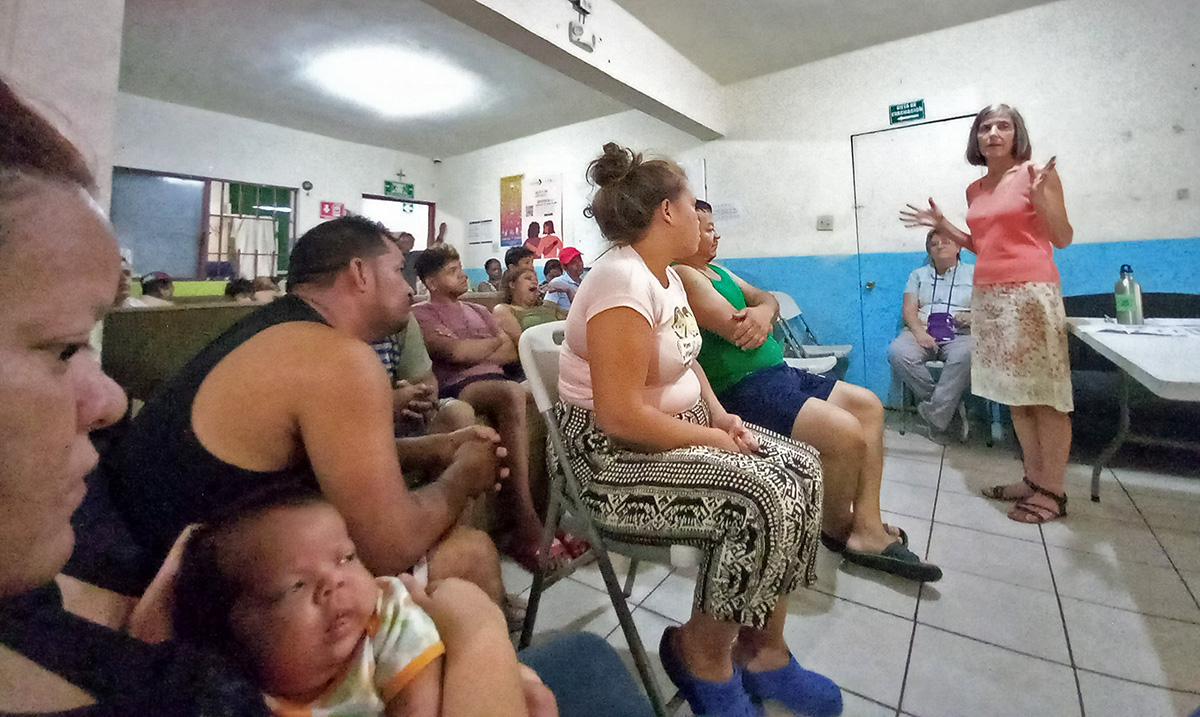
Heidi Cerneka speaking with migrants at Albergue San Óscar Romero, a migrant shelter in Ciudad Juárez, Mexico.
The faces change, the geography changes, but the stories don’t change.
In order to identify a situation as human trafficking, we analyze the act that led a person into the situation, the means by which they were subject to trafficking and the purpose of the action. The act may include recruiting, persuading or impelling a person to do something, like promising them a job in order for them to travel to a different country or to a certain location.
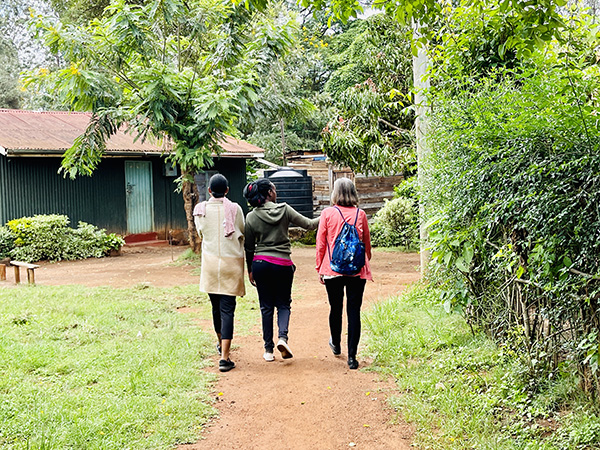
Heidi (right) with Patricia (center) in Nairobi, Kenya
They may be forced, tricked, coerced, or dragged into something by an abuse of their vulnerability or an abuse of power. For instance, the trafficker may threaten their family or the individual herself if she does not capitulate, or may trick her by promising her a job when there is no real job.
Finally, the end goal of the trafficker must be for commercial sex trafficking, forced labor, debt bondage or some other end that benefits the trafficker. What matters is that the individual gets nothing out of the deal and the trafficker benefits.
Migrants are a particularly vulnerable population, especially when considering those who are forcibly displaced from their homes by environmental disaster, generalized violence, persecution, political unrest or crashing economies, where jobs are nonexistent or pay so little that it’s impossible to survive. All of these leave people vulnerable to exploitation and taking risks that they normally would not take.
According to the 2022 World Migration Report (with data from the UN Office on Drugs and Crime), 45% of all identified victims of trafficking had been trafficked across international borders.
People who are forced to migrate bring with them the trauma from their countries of origin and a lack of familiarity with language and customs. At the U.S.-Mexico border, their vulnerability increases when they are forced to wait a long time in limbo — between the country they left and the country they are seeking — without stable income or work and at risk for kidnapping and exploitation. Women are subject to physical or extreme violence at the hands of their traffickers three times more often than men.
This year I have begun working on ways to address global trends of human trafficking among migrants and those forcibly displaced from their homes, especially women. I meet people who choose to migrate and who, on their journey — whether it be in transit to their destination or at the border or at their destination — are tricked or forced into service, which could be sex, some kind of labor, or even forced crime.
In Guatemala, the United States and Brazil, I have met people fleeing violence or seeking economic relief who found themselves forced into work with no pay and no way out or forced to trade sex for protection along their migration journey. The problem is that people who end up trading unpaid labor for protection or sex for protection, frequently do not even recognize their situation as one of human trafficking. And without identifying the trafficking, there is no way to seek protection from it.
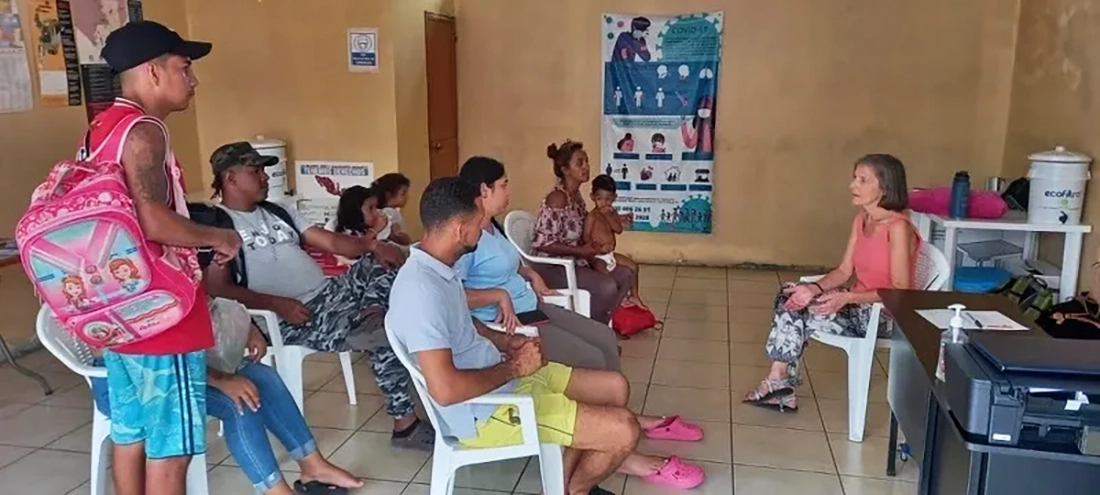
Heidi discussing migration and rights at Casa del Migrante in Tecun Uman, Guatemala near the Guatemala-Mexico border.
Guatemala
In Guatemala, I worked with a local shelter in Tecun Uman at the Guatemala-Mexico border. The Casa del Migrante, run by the Scalabrinians, receives migrants who were deported back to Guatemala or other Central American countries as well as many people fleeing their home countries and heading north to ask for asylum in Mexico or the United States.
That’s where I met María (all names of migrants have been changed to protect their privacy). María left her native Honduras when she, her sister and some others were offered jobs in Mexico and told they did not have to pay the travel fees. Desperate to support her four children, she did not ask for details. When she arrived in San Marcos, Mexico, she was taken to a bar to work for no pay. If she refused, they wanted money from her family as ransom. She said that she managed to escape and just wanted to go home to her four children.
When I met her, she was stuck at the Mexico-Guatemala border, trying to find a way to pay her bus fare back to Honduras.
Kenya
In Kenya women accept jobs in the Middle East, hoping those jobs will allow them to support their families and especially their children. They sign contracts in Arabic, which they don’t understand, and end up being underpaid or unpaid despite the promises.
I met one woman, Patricia, who was not being paid what she was promised, but was being paid something — until she broke a vase while cleaning the house, where she had agreed to work. The owner told her that she would have to pay for the vase. From that point on, her wages were withheld.
Patricia complained and said she wanted to leave because the only reason she left her three children at home with her mother and took the job was to support the family. The woman then “traded” her to another household that worked her nonstop and did not pay her.
She thought she was going to work and make life better for her children, but instead, after 18 months, she returned home with the clothes on her back and nothing more.
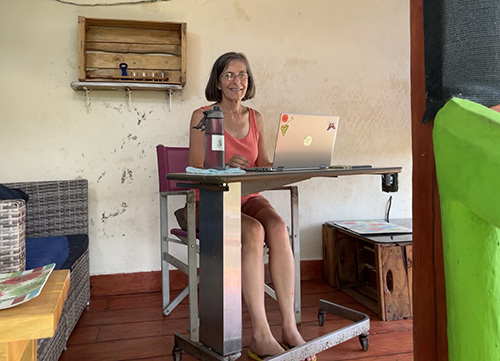
Heidi working on a legal brief during her stay in Tecun Uman.
Brazil
In Brazil I work with a project that is focused on addressing human trafficking of foreign women for the purposes of forced crime. The women are lured to Brazil with promises of employment or by an online romance. Once in Brazil, they are told they will have to carry drugs to an international destination. If they try to back out, they are threatened, sometimes beaten or abused, their families are threatened, or they are told that they can leave if they want, but they owe $3,000 for the plane ticket plus other costs.
Carla said, “Yes, I agreed to carry the suitcase with drugs, but I explained to the judge that when I was hearing my own daughter’s voice at the other end of the phone in Venezuela, and they said they were going to take my daughter, the only solution was to take the suitcase and go.” There was no other way to pay the trafficker back.
El Paso – Ciudad Juárez (U.S.-Mexico border)
Finally, my home base is El Paso, Texas. Working with Las Americas Immigrant Advocacy Center, we identify cases of human trafficking in the lives of migrants here at the border. Many agencies work with the issue of human trafficking but are not aware of the immigration consequences, or how to guarantee the immigration rights of victims.
Isabel entered the U.S. with a visa and then started working as a caretaker for an older woman in the community, hired by the woman’s daughter. Eventually, her job stretched to seven days a week, 24 hours a day. She was not allowed to leave, and she was threatened by the daughter. Afraid for her immigration status, she kept working until finally she fought back and found herself on the street with her 6-year-old granddaughter, who is in her custody.
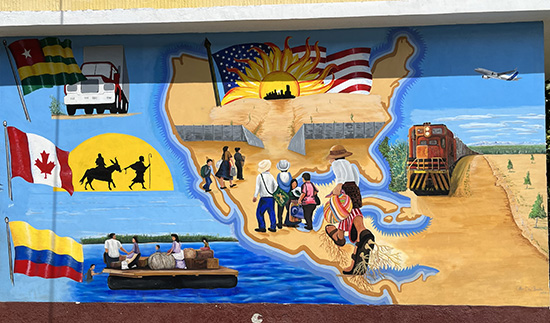
A mural on the walls of Casa del Migrante in Tecun Uman,
Delia accepted a job opportunity, was brought into the U.S. through the U.S. Virgin Islands and then heard someone congratulate her as she was going to be one of the “new girls” at a bar that was opening up. We represent Delia, Isabel and others in their immigration cases. In the shelters in Ciudad Juárez, we offer workshops and training for migrants to help them understand what trafficking is — both for themselves and to help others.
As a Maryknoll lay missioner, with almost 25 years in the field, my current work as an immigration lawyer addresses migration and human trafficking from these different perspectives.
In Brazil, we work to get the criminal justice system to consider the women we identify as victims of human trafficking first, and then consider whether there is even a criminal case connected to their international drug trafficking charges. We have already made great inroads with some judges, public defenders and other organizations.
In Guatemala, besides spending time just listening to the stories of the migrants, I explained to them what they need to ask for asylum in the U.S. I also recommended many practical things, such as taking pictures of all of their proof and emailing it to themselves so that if they are robbed or lose their documents or their phones, they do not lose their evidence.
I offered training for the shelter staff about the U.S. asylum system and about human trafficking in Mexico and in the United States. My work now stretches across borders and realities to work with people forced to flee their homes because of violence, persecution or dire economic conditions. They find themselves vulnerable to human traffickers, willing to take risks or put on blinders, in the hope that just maybe the opportunity may save themselves or their families.
Human trafficking of migrants can victimize migrants and can also lead people to migrate. The common factor is their situation of vulnerability and the fact that a third person, often in organized crime, is the one who benefits from the situation, not the individual taking the risk.
The International Organization for Migration (IOM) estimates that there were approximately 281 million international migrants in the world in 2020 — many of them in situations of vulnerability. Until we shift global politics and the policies that create the situations forcing people to move, we will need to continue working to screen, identify and protect people from traffickers who are exploiting their extreme vulnerability.

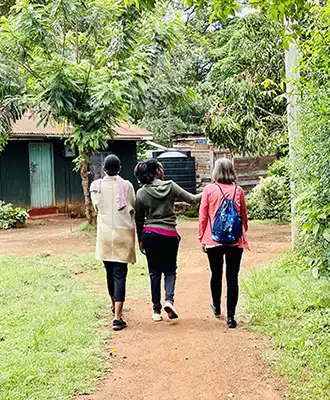


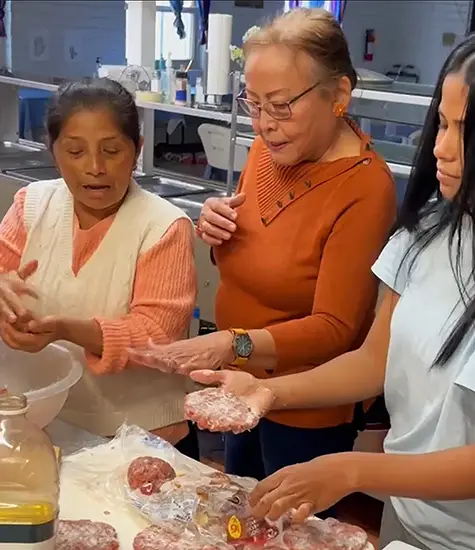
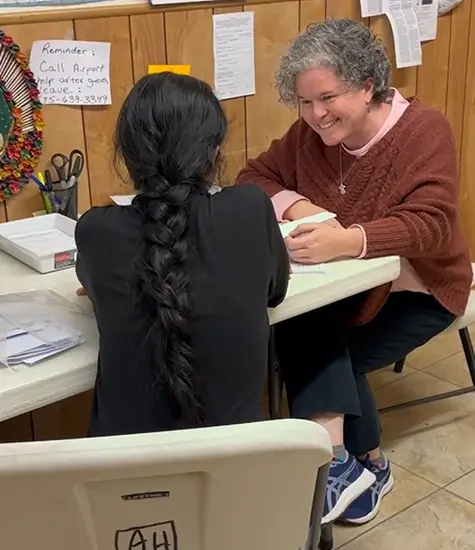




Heidi, gran compañera! How proud and thankful I am for the amazing work you are doing!!! Also, what you are doing also teaches us how to deal with the increasing presence of human trafficking among vulnerable populations anywhere! Un tremendo abrazo!
thanks so much Judy- and so lovely to see your picture and your comment here- keep on keepin’ on in the struggle for justice and for women!!
It’s both exhausting and enthralling reading all about what Heidi is doing.
Her work is so important. I follow Tim Tebow and he and Heidi are examples of those working so hard to help so many in need. They are truly making the world a better place.
Chris –
thanks so much for the support and for your continued prayers and holding up me, Tim and the people of the world!